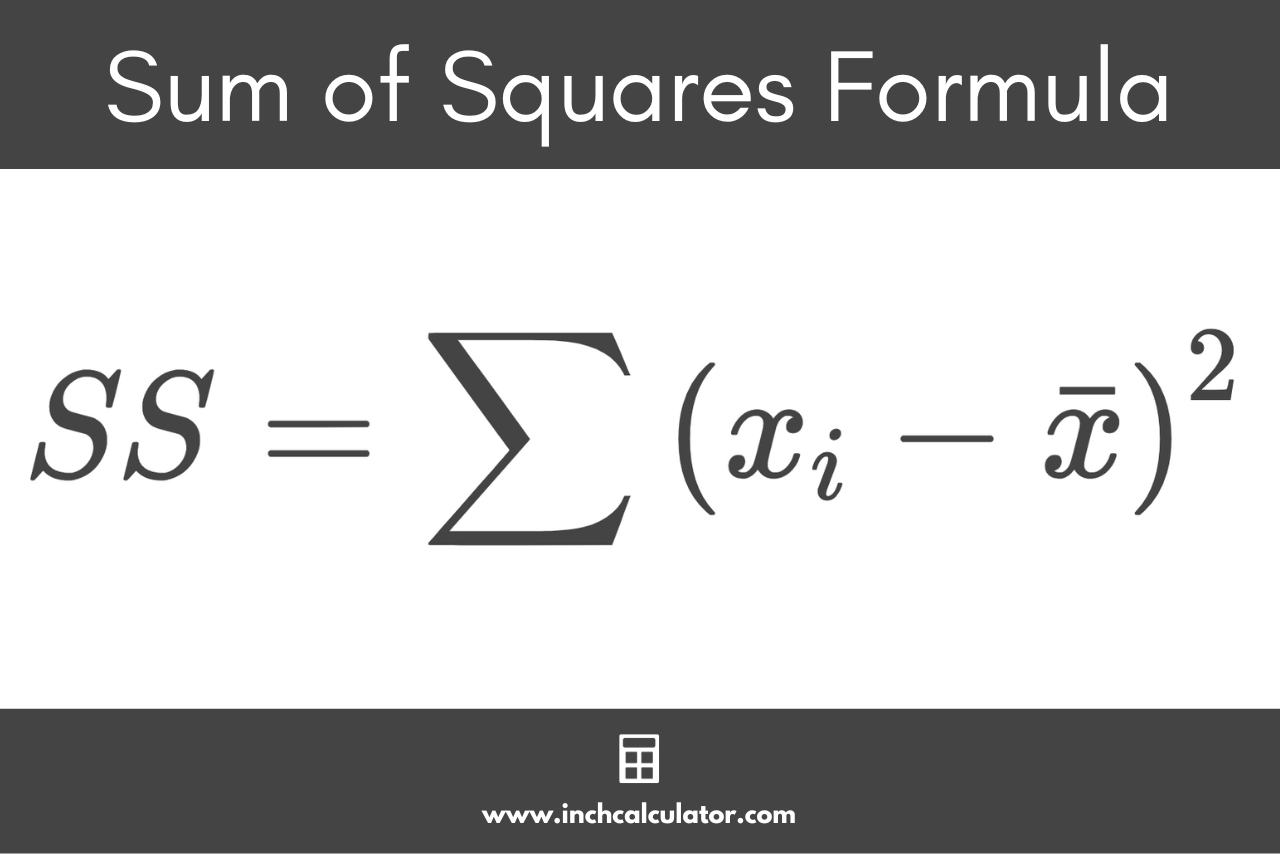Sum of Squares Calculator
Enter the numbers in a data set to calculate the sum of squares using the calculator below.
Results:
| Sum of Squares: | |
|---|---|
| Count: | |
| Mean: |
Steps to Solve
Sum of Squares Formula
Step One: Find the Mean
The mean is equal to the sum of each observation xi divided by the sample size n
Step Two: Find the Deviation From the Mean
The deviation from the mean for each observation is equal to its value minus the mean x̄.
Step Three: Square the Deviations
Square each deviation from the mean.
Step Four: Find the Sum of Squares
Add each squared deviation to find the sum of squares.
On this page:
How to Calculate the Sum of Squares
The sum of squares is a statistical measure of the deviation from the mean for numbers in a data set. The sum of squares is equal to the sum of the squares of the differences from the mean for each number or data point in the set.
The sum of squares is often used to find the variance or standard deviation in a data set.
The sum of squares formula is also used extensively in the analysis of variance (ANOVA) and related models that seek to understand whether there are meaningful differences between groups.
In a classical one-way ANOVA, you decompose the sum of squares for the whole data into the sum of squares within groups and the sum of squares between groups. You can then conduct an F-test using the ratio of these two sums of squares, provided you have the correct number of degrees of freedom.
Sum of Squares Formula
The formula to calculate the sum of squares is:
Thus, the sum of squares SS is equal to the sum of each number in the set xi minus the mean x̄ squared.

You can find the sum of squares in four easy steps using this formula.
Step One: Calculate the Mean
The first step to finding the sum of squares is to find the mean. The mean is equal to the sum of all numbers in the set divided by the count of numbers in the set.
The mean x̄ is equal to the sum of each number in the set divided by the count.
Step Two: Calculate the Deviations From the Mean
The next step is to calculate the deviation of each data point from the mean.
Step Three: Square Each Deviation
Then, calculate the square for each deviation.
Step Four: Calculate the Sum of Squares
Finally, you can use the sum of squares formula to calculate it by adding the squared deviation scores for each data point together.
For example, let’s find the sum of squares for the numbers [1,3,4,5,8].
We’ll use the six steps for the SD calculation shown above.
Step One: Find the mean by dividing the sum of all of the values by the sample size.
Step Two: Subtracting the mean from each observation to find the deviations.
| Observation | Deviation from x̄ |
|---|---|
| 1 | 1 – 4.2 = -3.2 |
| 3 | 3 – 4.2 = -1.2 |
| 4 | 4 – 4.2 = -0.2 |
| 5 | 5 – 4.2 = 0.8 |
| 8 | 8 – 4.2 = 3.8 |
Step Three: Square each of the deviations by raising it to the power of 2.
| Deviation | Squared Deviation |
|---|---|
| -3.2 | -3.2² = 10.24 |
| -1.2 | -1.2² = 1.44 |
| -0.2 | -0.2² = 0.04 |
| 0.8 | 0.8² = 0.64 |
| 3.8 | 3.8² = 14.44 |
Step Four: Find the sum of squares by adding up the squared deviations.
So, the sum of squares for this sample is equal to 26.8


